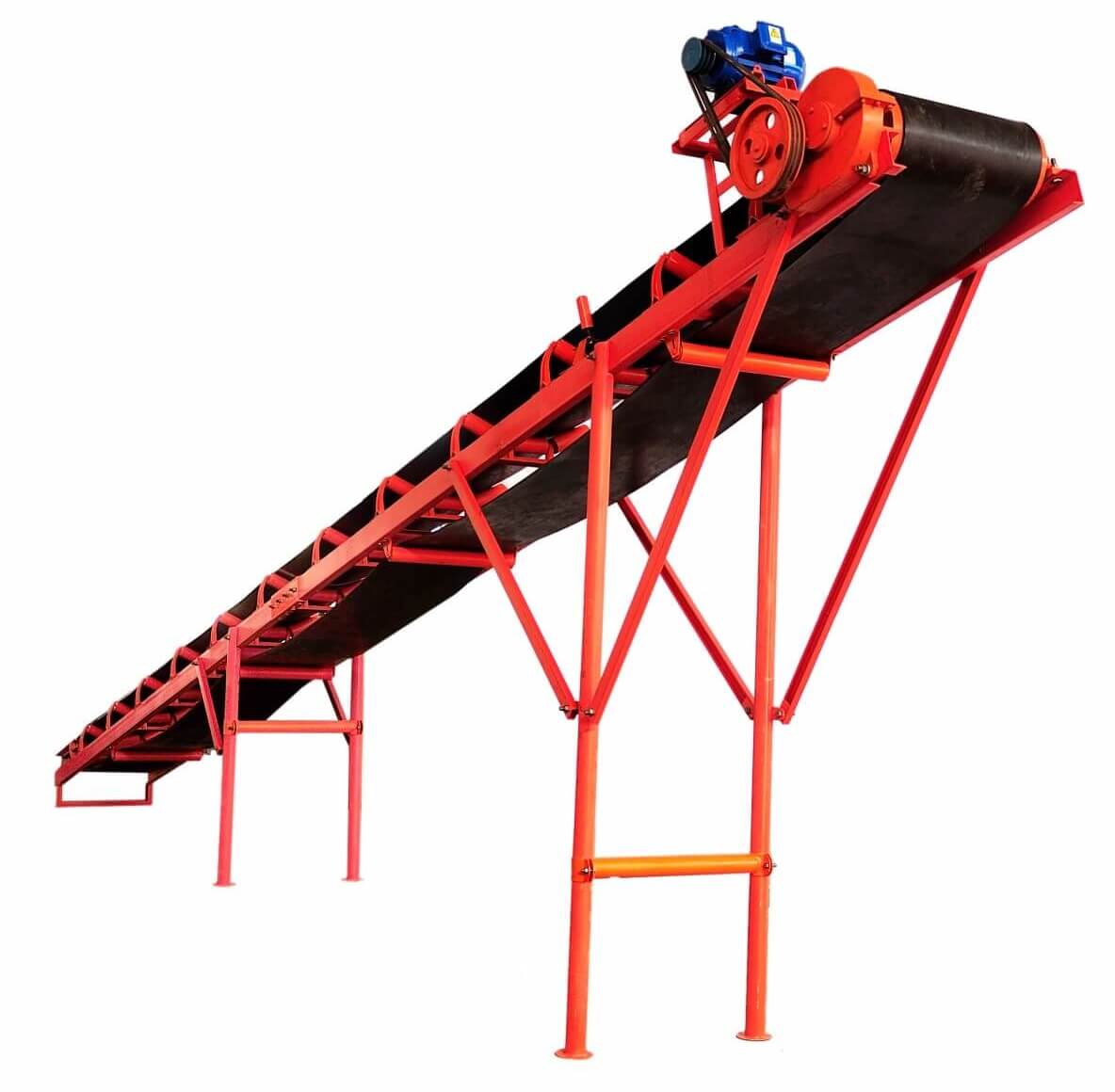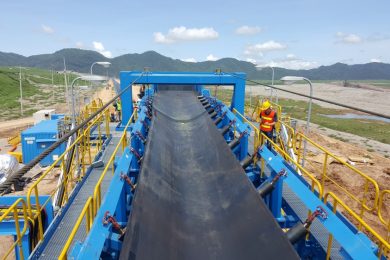Overland Conveyors Fundamentals Explained
Table of ContentsSome Ideas on Overland Conveyors You Need To KnowWhat Does Overland Conveyors Mean?Overland Conveyors Can Be Fun For EveryoneOverland Conveyors Things To Know Before You Get ThisSome Known Details About Overland Conveyors The smart Trick of Overland Conveyors That Nobody is Talking AboutOverland Conveyors for DummiesOur Overland Conveyors Diaries
There are also various other related tools that use a chain to drag products such as a tubular drag conveyor. These conveyors make use of a vacuum or air stress to relocate product.They lift them approximately a different level of the storage facility. They are not big sufficient to raise individuals, nevertheless. These are comparable to a roller conveyor other than with tiny, private wheels rather of long, round rollers. Walking Light beam conveyors move product incrementally along the conveyor utilizing relocating as well as fixed supports.

The Basic Principles Of Overland Conveyors
Conveyor Equipments are mechanical tools or settings up that carry product with marginal effort. While there are various sort of conveyor systems, they usually are composed of a structure that sustains either rollers, wheels, or a belt, whereupon products relocate from one place to another. They might be powered by an electric motor, by gravity, or by hand.
The conveyor belting is sustained by either a metal slider frying pan for light tons where no rubbing would certainly be related to the belt to create drag or on rollers. Power is supplied by motors that make use of either variable or continuous rate decrease gears. The belts themselves can be made from numerous materials, which should correspond to the problems under which the belt will be operating.
Moving a heavier tons suggests a thicker and stronger building and construction of conveyor belting product is required. Belt conveyors are commonly powered and can be operated at different rates depending on the throughput called for.
7 Easy Facts About Overland Conveyors Described
Key specs include the roller size and axle center dimensions. Roller conveyors are used primarily in material handling applications such as on loading anchors, for luggage handling, or on production line amongst many others. The rollers are not powered and use gravity, if inclined, to move the item, or by hand if placed flat.
Several sizes and load carrying abilities are available. Sphere transfer conveyors are not powered and count on external forces to move the product along the conveyor. Magnetic Magnetic Conveyors make use of relocating magnets placed below stationary plates, tables, or various other kinds of non-magnetic slider beds, to relocate magnetic (ferrous) products, typically in the type of machining scrap.
Trick specs include the chute product as well as the physical dimensions such as size and chute size. Chute conveyors are utilized for scrap handling, product packaging, postal service package or mail handling, and so on.
Overland Conveyors Fundamentals Explained
Chain/Tow/Drag Line Conveyor Drag/Chain/Tow Conveyors utilize mechanical tools affixed to relocating members, typically chains or cords, to drag or tow products. Drag conveyors are used for relocating bulk products in bins, flights, or various other attachments and can have several discharge or loading points. Tubular drag conveyors use a completely confined system of chains to share item in any type of direction.
Tow conveyors utilize a towline such as cables or chains, generally in the flooring or just above it, to tow product straight or to tow wheeled carts or dollies. Overhead Expenses Conveyors are placed from ceilings that make use of carts or carriers relocated by chains, cable visit here televisions, or similar links. Overhead conveyors are mostly utilized in material handling applications where the item requires to be hung, such as dry-cleaning garment lines, paint lines, or parts handling systems, or for cooling down as well as treating.
Materials for the conveyors can be metallic or non-metallic depending upon the media being shared. Numerous dimensions are readily available depending upon the load and also throughput needs. A screw conveyor in a winery presses grapes to journalism. Picture credit history: Josef Mohyla/ Screw/Auger Screw conveyors, sometimes called spiral, worm, or auger conveyors usage helical components to relocate products.
The Definitive Guide to Overland Conveyors
The helical screw features within a housing, trough or area to take full benefit of the rotational pressure. These tools can be utilized to blend, upset or mix such products, or to keep options.
Bottom conveyors make use of multiple screws in an open trough. This style still moves the substrate but enables for even more freedom within the covering.
The thing being sustained at a stationary position is chosen up by the strolling beam of light as well as indexed to its following placement, where one more manufacturing step takes area. This motion repeats over the length of the conveyor. Walking light beam conveyors can have solitary or several lines depending on the item. Wheel Conveyor Wheel Conveyors use unpowered wheels to move things along their lengths by gravity or hands-on power.
All About Overland Conveyors
The make-up of the material, if powders, granules, pellets, fibers, or flakes are being shared, must also be taken into consideration, together with the particle size, weight, and also density. The feature of the conveyor system itself may vary. The 2 main classifications of relocating material with a procedure are communicating and also feeding.
The desired window of time for this activity should be thought about, along with the amount of pickup and also drop points, the amount of product being relocated, and whether or not cross-contamination in between multiple materials is a worry. Feeding is even more time sensitive as well as calls for a lot more precise systems than coveying.
The product being relocated might need to be delivered in batches, or at a managed, continual price. A vital variable to think about prior to the option of a conveyor system is the setting in which it will be made use see this of. High moisture, temperature level, resonance, stress, breakable or unsafe products, and flammable products in the facility ought to all be talked about with a conveyor maker to establish any kind of potential risks and the countermeasures and workarounds required.
More About Overland Conveyors
Conveyors systems are frequently relatively complex in their design and also construction due to their big scales and assimilation into various factory processes. Still, the modular nature of many conveyor parts makes long and complicated systems easily achievable. Suppliers of such systems can use style assistance so that the conveyor suits the workspace.

Belt conveyors, for instance, can be found in a selection of sizes and also can range from foot-long units made use of on packaging lines to mile-long systems made use of for mining procedures. Conveyors can be hand poweredwhere products are moved along manually over rollers or wheelsor engine/motor powered, or gravity powered. As a whole, though, they are driven by air conditioning and also DC electric motors, either straight view it now or via decrease gears, chains, and also gears, etc.
Overland Conveyors for Beginners
Handbook kind roller and wheel conveyors can commonly be bought in distinct sections as well as bolted up to create material taking care of systems of nearly any type of size. Generally, powered conveyors utilize head shafts and tail shafts where the head end supplies the drive plan, as well as the tail end offers adjustment of the chain or belt tension.
of air conditioner motors. Very long belt conveyors moving ore and also various other items commonly count on conveyor belt idlers to create troughs in the belts to better include the conveyed products. Conveyor Equipment - A Recap This overview offers a fundamental understanding of conveyor system ranges, considerations for usage, their applications, and industrial usages.